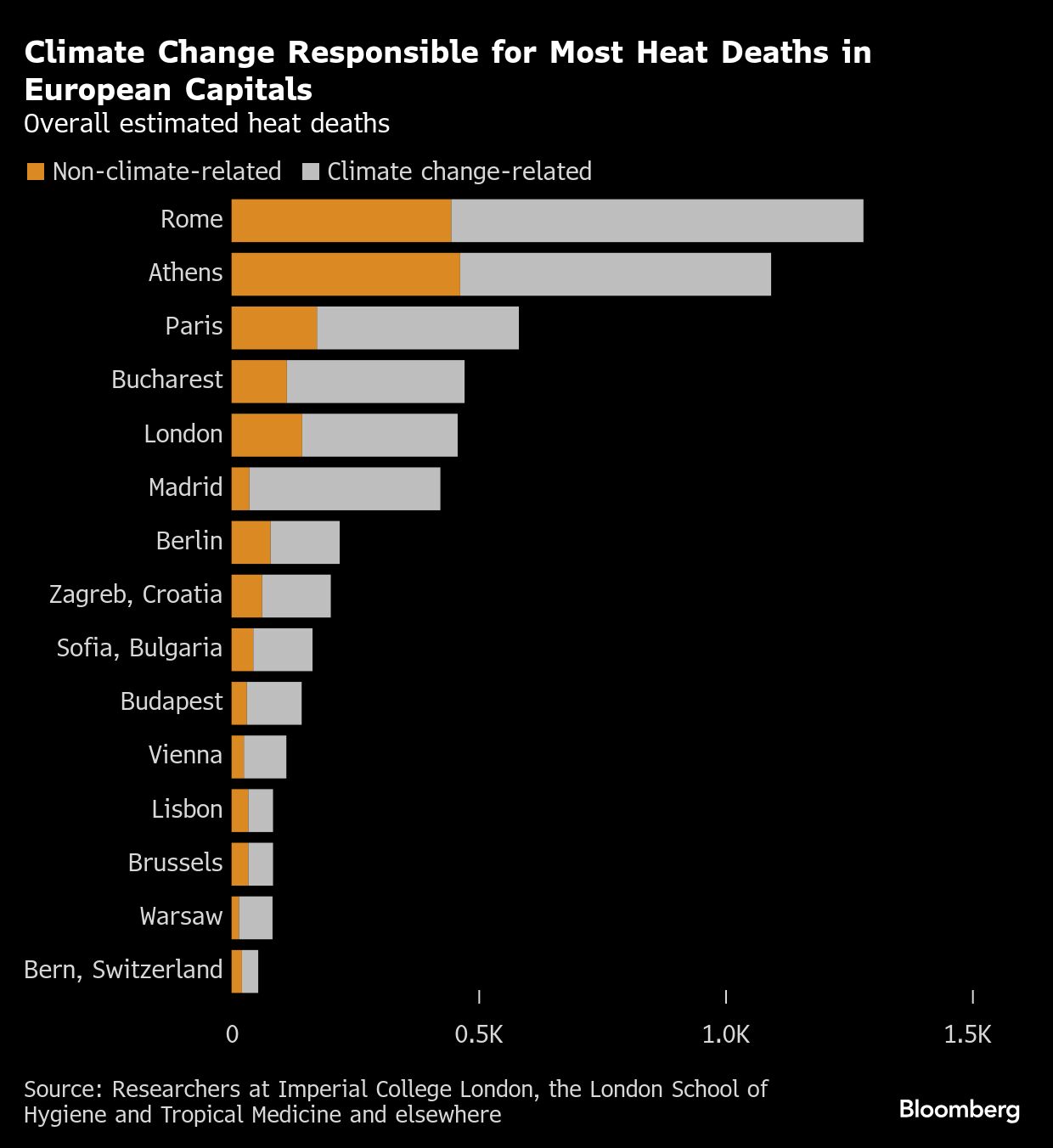
Climate change fueled scorching summer temperatures that killed an estimated 16,500 people in European cities this summer, pushing overall heat deaths to more than three times what might otherwise have occurred, according to a new study.
The analysis presents an early glimpse at the effects of Europe’s fourth warmest summer on record, in which a series of heat waves hit countries from Italy to Germany and France. Temperatures reached up to 46 degrees Celsius in Spain and Portugal, and led to the deaths of several outdoor workers in Spain and Italy.
“These numbers represent real people who have lost their lives,” said Friederike Otto, an Imperial College London climate science professor who co-authored the study alongside colleagues from the London School of Hygiene and Tropical Medicine and other institutions. “If we continue on the path that we are now — continue burning fossil fuels — these deaths will only increase."
Researchers focused on 854 urban areas, finding that temperatures were as much as 3.6C higher from June through August due to climate change, according to a report they released Wednesday.
But that represents just under a third of Europe’s population, they cautioned, meaning that the true death toll is almost certainly higher. More than 60,000 people were likely killed by extreme heat in Europe in the summer of 2022, and more than 47,000 people in 2023, other studies have found.
Europe is the world’s fastest-warming continent and the Mediterranean is a hotspot for climate change. Extremely hot conditions are upending economic activities in the region, especially in the tourism sector. This summer, major tourist attractions including the Eiffel Tower in Paris and the Acropolis in Athens temporarily closed due to heat.
ALSO READ: Climate change drives Britain toward hottest summer on record

The study is part of a growing body of research that shows how climate change is disrupting human activities now, allowing the public and policymakers to understand in close to real time the estimated effects of greenhouse gas pollution. Some scientists have also looked to this cutting-edge branch of work, known as attribution, to help draw connections between damaging extreme weather and individual polluters.
Only in the last decade have scientists been able to quickly assess what role climate change has played in extreme weather events.
They do this by statistical analysis of the local weather history and comparing observed weather with simulations of a cooler, pre-warming climate. Based on research on how death rates change with the temperature, they can then estimate the number of heat deaths that occurred and how many might have been expected without climate change. Government statistics tend to undercount heat deaths, researchers note.
Imperial College London is a leading partner in World Weather Attribution, a scientific research group that pioneered rapid extreme-weather attribution. The researchers previously looked at a European heat wave earlier in the summer, finding that the warm weather killed some 2,300 people in 12 European cities from June 23 to July 2.

Heat puts stress on the body, including by forcing the heart to pump harder, a stressor for those with underlying heart disease, said Courtney Howard, an emergency physician in Canada who chairs the Global Climate and Health Alliance. High temperatures can also exacerbate air pollution, worsening respiratory diseases such as asthma and chronic obstructive pulmonary disease, she said.
Older people also suffer disproportionally in high temperatures, and aren’t as able to sweat to cool down. More than 80 percent of the climate change-related heat deaths affected individuals ages 65 and older, according to the study.
READ MORE: Europe’s wildfires have burned the most land in nearly 20 years
The data found that Italy, Spain and Portugal were particularly hard hit, but countries as far north as Sweden also saw higher-than-average temperatures.


